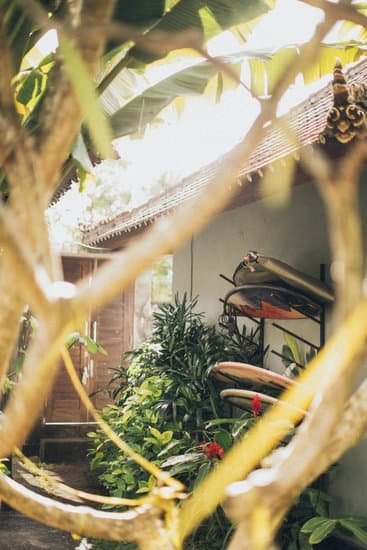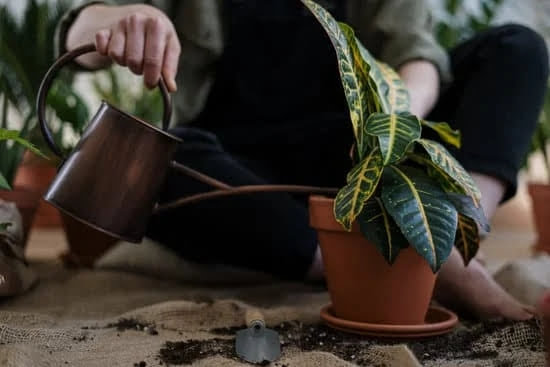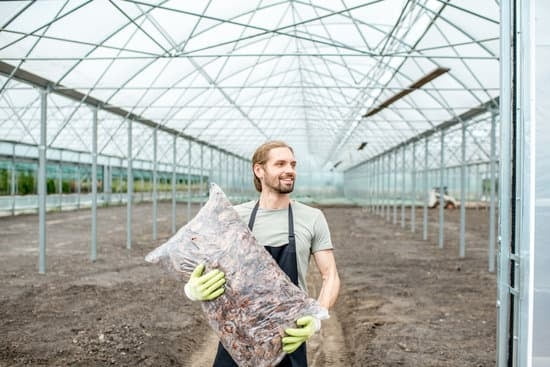Are you interested in trying your hand at gardening? Whether you have a green thumb or not, beginner gardening ideas can help you get started on the right foot. Starting your own garden can be a rewarding and fulfilling experience, providing not only beautiful blooms and fresh produce but also a chance to connect with nature and enjoy the therapeutic benefits of gardening.
If you’re new to gardening, it can be overwhelming to know where to begin. From choosing the right location for your garden to selecting beginner-friendly plants and learning basic gardening techniques, there’s a lot to consider. But with the right guidance and resources, even beginners can create a successful and thriving garden.
In this article, we’ll explore essential gardening tools for beginners, how to choose the right location for your garden, selecting low-maintenance plants and flowers, basic gardening techniques, creating a budget-friendly garden, troubleshooting common problems, and the many benefits of starting your own beginner garden. Whether you have limited space or are working with a tight budget, these beginner gardening ideas will help you embark on your gardening journey with confidence.
Essential Gardening Tools for Beginners
When starting a beginner garden, having the right tools is essential for success. Here are some essential gardening tools for beginners that will help you get started on the right foot:
1. Hand Trowel: A hand trowel is a small tool with a pointed, scoop-shaped metal blade and a handle. It’s perfect for digging small holes for planting, transplanting seedlings, and loosening soil.
2. Pruning Shears: Also known as secateurs, these are used for trimming and shaping plants. They can also be used to cut back dead or overgrown stems.
3. Garden Gloves: A good pair of garden gloves will protect your hands from dirt, thorns, and sharp objects while working in the garden.
4. Watering Can or Hose: Proper watering is key to a successful garden, so make sure you have a reliable watering can or hose to keep your plants hydrated.
5. Garden Rake: A garden rake is useful for leveling soil, spreading mulch, and raking up leaves and debris.
6. Garden Fork: This tool has sturdy tines that are ideal for breaking up compacted soil and mixing in compost or fertilizer.
7. Wheelbarrow: A wheelbarrow makes it easy to transport heavy materials such as soil, mulch, or plants around your garden.
Having these essential gardening tools will help you tackle basic gardening techniques such as planting, watering, and maintaining your garden with ease.
Choosing the Right Location for Your Garden
When it comes to choosing the right location for your beginner garden, there are several factors that need to be considered. The amount of sunlight, the presence of shade, and the quality of the soil all play a crucial role in the success of your garden.
Sunlight
One of the most important factors to consider when choosing a location for your garden is the amount of sunlight it receives. Most plants require at least 6 hours of direct sunlight per day to thrive, so make sure to choose a spot that gets ample sun exposure.
Shade
While sunlight is crucial for many plants, some also require shade to flourish. If you plan on growing shade-loving plants such as ferns or hostas, make sure to find a location in your garden that provides adequate shade throughout the day.
Soil Considerations
The quality of the soil in your chosen location can significantly impact the growth of your plants. Consider having your soil tested to determine its pH level and nutrient content. You may need to amend your soil with organic matter or fertilizers to improve its quality before planting.
By carefully considering these factors and choosing a location that meets the needs of your specific plants, you can set yourself up for success as a beginner gardener. Remember that understanding these basics will help ensure that your garden flourishes and brings you joy for years to come.
Selecting Beginner-Friendly Plants and Flowers
Selecting low-maintenance plants and flowers is essential for beginner gardeners who are just starting out. These types of plants require minimal care and attention, making them perfect for those who are new to gardening.
When choosing plants for your beginner garden, it is important to consider factors such as the climate in your area, the amount of sunlight your garden receives, and the type of soil you have. By selecting the right plants, you can set yourself up for a successful and enjoyable gardening experience.
Some popular low-maintenance plants and flowers for beginner gardeners include succulents, which are known for their ability to thrive in dry conditions with minimal watering. Another great option is lavender, which not only requires little maintenance but also adds a beautiful fragrance to your garden. Additionally, daylilies are a beautiful and easy-to-grow flower that comes in a variety of colors and can withstand different soil types.
It’s important to also consider native plants that are well-adapted to your specific region. These plants are already acclimated to the local climate and soil conditions, making them much easier to care for. By incorporating native plants into your beginner garden, you can ensure that they will thrive without requiring too much attention or upkeep.
| Plant | Maintenance Level |
|---|---|
| Succulents | Low |
| Lavender | Low |
Basic Gardening Techniques
When it comes to beginner gardening ideas, mastering basic gardening techniques is crucial for successfully growing and maintaining a bountiful garden. Planting, watering, and maintenance are the cornerstone of any successful garden and understanding these fundamentals will set you on the right path as a first-time gardener.
Planting is a critical step in the gardening process. Understanding the specific needs of the plants you choose – such as sunlight and water requirements – will help ensure their long-term health. For beginner gardeners, it’s best to start with low-maintenance plants that are more forgiving if you make mistakes. Consider options like zinnias, sunflowers, and black-eyed Susans for colorful blooms that are easy to care for.
Watering is another essential aspect of gardening. It’s important to find a balance between under-watering and overwatering your plants, as both can lead to problems. As a general rule, most plants prefer soil that is consistently moist but not waterlogged. Keep an eye on the weather conditions in your area as well, as this will affect how much water your garden needs.
Maintenance includes tasks such as weeding, pruning, and fertilizing your plants to encourage healthy growth. Regularly inspect your garden for pests or signs of disease, and take action promptly if needed. Learning these basic techniques will not only help you grow a thriving garden but also build confidence as a beginner gardener.
| Gardening Techniques | Importance |
|---|---|
| Planting | Understanding plant needs, choosing low-maintenance options |
| Watering | Finding the right balance, considering local weather conditions |
| Maintenance | Weeding, pruning, fertilizing for healthy growth |
Creating a Budget-Friendly Beginner Garden
When starting a beginner garden, it’s important to consider the costs associated with supplies. However, there are several ways to create a beautiful garden without breaking the bank. Here are some tips for saving money on gardening supplies:
- Shop for second-hand or discounted gardening tools and equipment at thrift stores, garage sales, or online marketplaces. Many people are willing to sell or give away gently used tools at a lower price.
- Consider using household items for gardening purposes. For example, old buckets or containers can be repurposed as planters, and yogurt containers can be used as seedling starters.
- Join a local gardening group or community garden where members often share seeds, plants, and advice. This is a great way to access free or low-cost resources while learning from experienced gardeners.
In addition to saving money on supplies, it’s also important to create a budget for ongoing maintenance and care of your garden. With these budget-friendly tips, beginner gardeners can enjoy the process of creating and maintaining their own outdoor space without breaking the bank.
By implementing these cost-saving techniques, beginner gardeners can stretch their budget while still enjoying all the benefits of nurturing their own green space. With a bit of creativity and resourcefulness, creating a thriving garden doesn’t have to be an expensive endeavor.
Troubleshooting Common Beginner Gardening Problems
Identifying and Dealing With Pests
One common problem that beginner gardeners face is pests invading their garden and damaging their plants. Some of the most common pests include aphids, caterpillars, and slugs. To tackle this issue, it’s essential to regularly inspect your plants for any signs of pest infestation.
Insecticidal soap and neem oil are effective natural remedies that can be used to deter pests without harming the environment. Additionally, planting companion plants such as marigolds and basil can help repel pests and protect your garden.
Preventing and Managing Diseases
Diseases such as powdery mildew, blight, and root rot can affect the health of your plants if not addressed promptly. Beginner gardeners should focus on preventing these diseases by providing adequate air circulation, proper spacing between plants, and avoiding overhead watering.
Fungicides made from baking soda or copper sulfate can also be used to manage fungal diseases in a safe manner. It’s important to stay vigilant and remove any diseased plant material to prevent the spread of diseases in your garden.
Tackling Weeds Effectively
Weeds are another common nuisance that can take over a beginner garden if left unattended. Mulching with organic materials such as straw or wood chips can help suppress weed growth while also retaining moisture in the soil. Hand-weeding is also an effective method for getting rid of weeds, especially when they’re still small and manageable.
For larger areas, using a hoe or hand tiller can make the task easier. By staying proactive and consistent with weed management, beginner gardeners can ensure that their plants have ample space, nutrients, and water to thrive without competition from unwanted weeds.
By being informed about how to identify and address these common gardening problems effectively, beginners will be better equipped to maintain a healthy and thriving garden from the start. Learning these troubleshooting techniques will not only help in preventing potential issues but also contribute positively towards creating an enjoyable gardening experience for beginners.
The Benefits of Starting a Beginner Garden
In conclusion, starting a beginner garden can be incredibly rewarding in many ways. Not only does it provide the opportunity to grow your own food and beautiful flowers, but it also offers numerous health benefits. The physical activity involved in gardening can contribute to improved fitness and overall well-being. Additionally, spending time outdoors surrounded by nature has been shown to reduce stress and anxiety, leading to better mental health.
Moreover, cultivating a garden, no matter how small, can have a positive environmental impact. Plants produce oxygen and help filter the air, contributing to cleaner air quality. Growing your own fruits and vegetables also means reducing the carbon footprint associated with transporting produce from distant places. Furthermore, using organic gardening practices can support biodiversity and promote healthy ecosystems in your backyard.
In sum, beginner gardening ideas are not just about learning how to plant and maintain a garden; it’s about reaping the physical health benefits of being outdoors and active while nurturing mental well-being through relaxation and mindfulness. Additionally, establishing a beginner garden is an excellent way to connect with nature while positively impacting the environment around you.
So grab those essential gardening tools, choose the right location for your garden, and get started on your journey toward becoming an avid gardener.

Welcome to my gardening blog! I am passionate about plants and enjoy sharing my knowledge and experiences with others. In this blog, I will write about everything related to gardening, from tips on how to get started to updates on my own garden projects.





